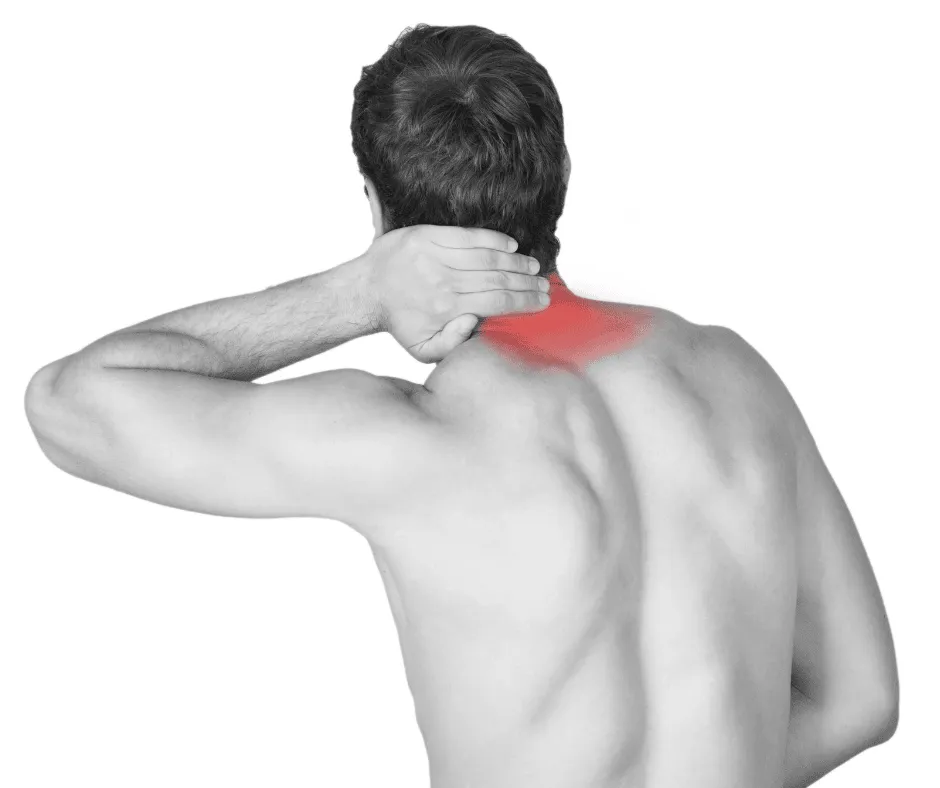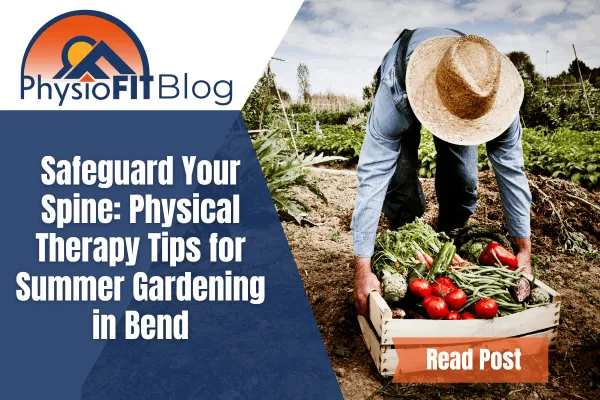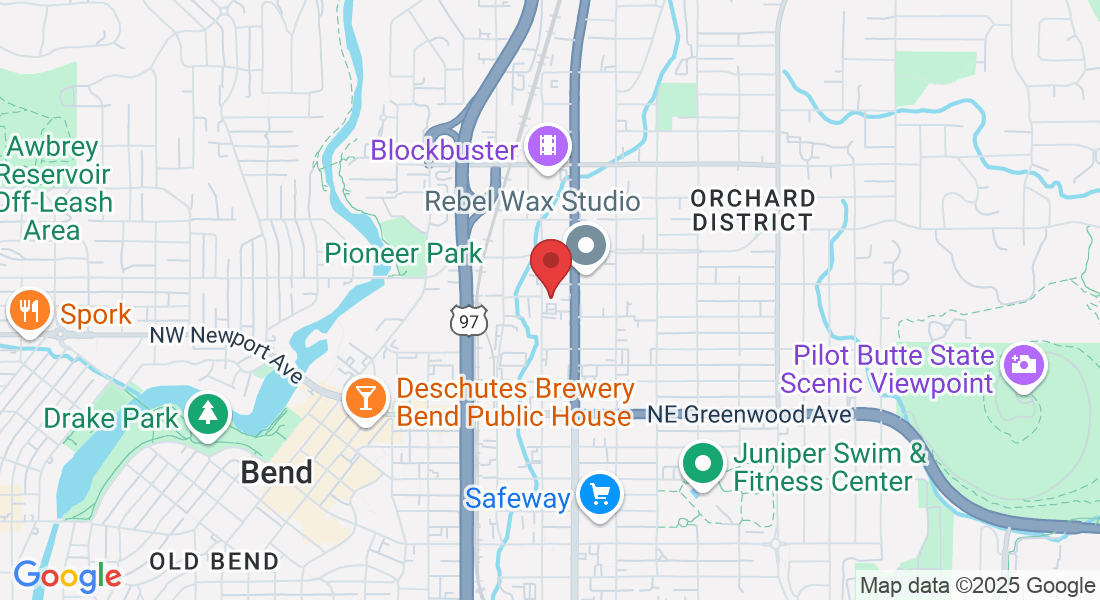Neck Pain Relief
Living Life Shouldn't Be Such a Pain in the Neck
Are you one among the millions experiencing "neck pain" and seeking relief? Neck pain is an everyday battle for roughly 10-20% of U.S. adults, leading to work absences, diminished life quality, and restricted physical activities. Consider us your guide, providing essential knowledge about neck pain and illustrating how we can assist you in restoring your well-being.
At PhysioFit, we are committed to delivering well-rounded neck pain treatments, expertly designed to align with every patient's specific condition and requirements. Our practice is rooted in a science-based, exercise-centric methodology of physical therapy, centered around individualized care plans for pain relief. Our vision transcends the mere alleviation of your neck discomfort; we strive to enhance your holistic health, diminish the chance of chronic or recurrent pain, and expedite your return to your routine activities.
What You Should Know
The most frequent injury resulting from car accidents is neck pain, accounting for nearly half, or 49%, of all vehicular injury cases.
Persistent neck pain may cause an array of complications, including depression, tension in relationships, anxiety, issues at work, hindrance in day-to-day tasks, and excessive tiredness.
Neck discomfort ranks third as a source of chronic pain.
A proper diagnosis of a neck problem involves a thorough evaluation from a professional.

The Most Common Causes of Neck Pain
Neck pain, a common complaint that can arise from various sources, often disturbs the delicate balance of daily life. Whether it's the natural aging process, physical strain, mental stress, traumatic injury, abnormal growths, or an underlying health condition, the origin of neck pain can be multifaceted. Understanding these potential causes is a crucial step towards effective treatment and relief.
Neck discomfort can be attributed to several factors:
Age-related Deterioration: Aging can lead to natural wear and tear of the cervical spine, leading to degenerative conditions like osteoarthritis or spinal stenosis, which can provoke neck pain. Persistent stress and repeated movements can weaken spinal disks, potentially causing a herniated disk or a pinched nerve.
Physical Exertion: Repetitive or strenuous activities can overstrain neck muscles, resulting in stiffness and pain. Factors like poor posture, weak abdominal muscles, and excess body weight can misalign the spine, contributing to neck discomfort. Long hours spent in front of a computer, straining the neck, is a common contributor to neck pain.
Psychological Stress: Stress-induced muscle tightening can lead to neck stiffness and pain. Many individuals may unconsciously tense their neck muscles during periods of stress or agitation, only realizing it when the neck begins to hurt.
Injury: Trauma can damage muscles, ligaments, disks, vertebral joints, and nerve roots in the spinal cord, causing neck pain. Whiplash, a common neck injury resulting from car accidents, often leads to neck discomfort.
Abnormal Growths: Tumors, cysts, and bone spurs can exert pressure on neck nerves, inducing pain.
Underlying Health Conditions: Certain health conditions, including meningitis, rheumatoid arthritis, and cancer, may present neck pain as a symptom.
If any of this information resonates with your current situation, we urge you to schedule an appointment with us immediately. Don't let hip pain diminish your life quality - allow us to help you embark on the path to relief today.
Strategies for Negating Neck Pain
Strategies can be implemented to mitigate neck discomfort related to muscle strain or tension. They are as follows:
Adopt Healthy Posture Habits: Arrange your devices such as computers and phones to prevent neck strain or slouching while using them. Ensure your shoulders are aligned, your back is straight while seated, and your neck isn't strained. Fine-tune your car seats for proper posture during transit.
Optimize Your Sleeping Position: Retain good posture even during sleep. Use a pillow for head support to align your head and neck with your body if you sleep on your side or back. For back sleepers, consider placing a pillow under your knees to lessen lower back pressure. Avoid stomach sleeping with a turned head.
Stay Mobile: Utilize exercises meant for neck pain relief to also prevent it. If your job requires prolonged sitting, incorporate occasional breaks for stretching and mobilizing, including neck muscles.
Avoid Shoulder-Borne Heavy Loads: Refrain from carrying substantial weights like book bags or suitcases on your shoulder. Opt for wheeled luggage or bags instead.
Strengthen Your Upper Back Extensor Muscles: Age-related weakening of the upper back is normal, causing the shoulders to stoop and the head to tilt forward. This posture puts extra strain on your neck and upper back.

Common Symptoms of Neck Pain
Experiencing headaches
Sensation of numbness or a tingling feeling, akin to 'pins and needles', in your shoulders or arms.
Inability to rotate the neck or incline the head
Rigidity in the neck, shoulder, and upper back regions
A radiating pain extending from the neck down to the shoulders or arms
An intense sensation of stabbing or burning
A continuous, nagging discomfort
Remember, if you resonate with any of the symptoms or conditions mentioned, we highly recommend making an appointment with us for a thorough evaluation and personalized treatment plan.
Please Note: The information provided on our website is intended for general education and is not a substitute for professional medical advice. Each individual's situation and body is different. Therefore, what may work for one person may not work for another. We care about your well-being and advise you to reach out to us to discuss your specific needs before implementing any advice from our website.
Your Source for All Things Physical Therapy in Bend Oregon
The PhysioBlog

Safeguard Your Spine: Physical Therapy Tips for Summer Gardening in Bend
Please Note: The information provided on our website is intended for general education and is not a substitute for professional medical advice. Each individual's situation and body are different. Therefore, what may work for one person may not work for another. We care about your well-being and advise you to reach out to us to discuss your specific needs before implementing any advice from our website.
Introduction
Gardening is a popular summer activity with lots of health benefits. But, it's important to look after your spine, especially if you are older. If you don't, it can cause pain or injury. You can protect your spine and still enjoy gardening with the right precautions.
One key point is good posture. That means keeping your spine straight and not bending or twisting too much. You can use tools with long handles to avoid bending and put knee pads or a gardening stool to help your lower back.
When lifting heavy objects, use proper lifting techniques. Bend your knees and use your leg muscles to lift. Don't twist or jerk while lifting, because this can strain your back muscles and ligaments.
Take breaks and listen to your body. Overexertion can cause fatigue and put your spine in danger. Pace yourself and take rests to stretch. This gives your muscles and joints time to recover.
Before starting any strenuous activity, warm up with light stretching exercises. Also, use ergo gardening tools to help reduce strain on your joints and muscles.
By following these tips and looking after your body, you can safeguard your spine and enjoy all the benefits of gardening this summer in Central Oregon.
The Importance of Safeguarding Your Spine while Gardening
Summer gardening can bring joy and fulfillment, but it's essential to prioritize the health of our spines. In this section, we'll explore the importance of safeguarding our spines while gardening, focusing on the risks associated with back pain and the alarming increase in back pain cases directly related to gardening.
Understanding the Risks of Back Pain in Gardening
Gardening can be a fulfilling activity, but it can also come with risks of back pain. Repetitive movements like bending, lifting, and twisting can strain the spine. So, to prevent this, there are some tips that can help.
First of all, warm up and stretch before gardening.
Also, strengthen core muscles with yoga or pilates.
When lifting, use your legs and keep a straight back.
Additionally, use appropriate tools with long handles and ergonomic features.
Take regular breaks and do stretching exercises during gardening.
Plus, protect your joints, such as your knees.
Maintain good posture and use ergonomics.
Don't forget swimming - it's low-impact exercise that strengthens the muscles supporting the spine.
Stay hydrated. Being outside in the heat can cause you to dehydrate faster, so make sure to drink up.
If the pain persists, seek professional help. Physical therapy can help address back pain and help regain strength and mobility.
Gardening: where every seed you plant comes with a side of back pain!

The Increase in Back Pain Cases due to Gardening
Back pain cases due to gardening have risen alarmingly. That's not a joke, that's actually true. Repetitive bending, lifting, and twisting involved in gardening can put strain on the spine, leading to back pain. This is a significant concern for gardeners.
Factors that lead to this include:
Underestimating physical demands of gardening
Not warming up or stretching beforehand
Improper bending and lifting techniques
Using traditional gardening tools
Consider strategies that protect other joints - use knee pads, maintain posture while lifting heavy objects, and consider swimming to reduce joint stress and get low-impact exercise. It's also important to get professional help from a physical therapist or chiropractor.
Remember: 'A strong core keeps the pain sorely away' - so strengthen your abs before gardening!
Tips for Preventing Back Pain while Gardening
Preventing back pain while gardening is crucial to enjoying a pain-free gardening experience. Follow these handy tips to safeguard your spine while digging into your lush garden oasis this summer. Step one involves warming up and stretching those muscles before getting your hands dirty. Step two focuses on strengthening your core to support your back during long gardening sessions. Additionally, step three provides valuable insight into proper bending and lifting techniques. Explore the benefits of using specialized gardening tools as outlined in step four. Lastly, don't forget to take regular breaks and incorporate stretching into step five for optimal spinal health. Keep your back happy as you cultivate a flourishing garden!
Step 1: Warm up and Stretch before Gardening
For a safe and enjoyable gardening experience, warm up and stretch! This will safeguard your spine and reduce the risk of injury. Start with a gentle warm-up activity like walking or cycling for 5-10 minutes. Then, do dynamic stretches for the major muscles used in gardening. Finally, focus on static stretches to improve flexibility in specific areas. Hydrate throughout the process and listen to your body's signals. If pain or discomfort arises, adjust your movements or take breaks.
Taking care of your spine through proper warm-up exercises not only prevents immediate discomfort but also contributes to long-term spinal health. Who needs a six-pack when you can have a garden-grown strong core? Don't miss out on the benefits - warm up and stretch before gardening!
Step 2: Strengthen Your Core Muscles
Strengthen your core muscles to safeguard your spine while gardening. Building up the muscles in your abdomen and back area can give your spine better support and reduce the chances of back pain and injury. Here is a 6-step guide to help you:
Do exercises that target your core, such as planks, crunches, and bridges. These exercises work the muscles in your belly, lower back, and pelvis.
Incorporate resistance training into your routine. Use resistance bands or weights to make your workouts more intense and challenge your core muscles.
Practice balance activities like yoga or tai chi. They can help enhance balance and strengthen your core muscles.
Maintain proper posture throughout the day. Good posture not only improves alignment, but engages and strengthens the muscles supporting your spine.
Consider adding Pilates or other similar exercises to your fitness routine. These workouts emphasize core strength and stability through controlled movements.
Stay consistent with your core-strengthening routine. This will help you maintain long-term benefits for your spine health.
By following these steps, you can effectively strengthen your core muscles and reduce the risk of back pain when gardening or doing other physical activities. If you want to make sure you're doing everything properly, we highly recommend seeing us here at PhysioFIT. Out physical therapists can help evaluate where you're at in your fitness/athletic journey and help give you proper guidance on what would be best practices for your specific body and lifestyle. This will help prevent injuries before they ever happen and help prepare you to reduce the strain on your back.
Step 3: Proper Bending and Lifting Techniques
For safeguarding your spine while gardening, proper bending and lifting techniques are key. If you don't use the correct posture or lift heavy objects, your back could be put under strain, potentially causing pain and injury. Follow these guidelines to guarantee correct body mechanics and diminish the risk of spinal issues.
Keep your back straight. When bending or lifting, don't round your spine - this increases pressure on the discs in your back.
Bend at the knees - not your back! Use your leg muscles to evenly distribute the weight and reduce strain on your spine.
Avoid twisting motions when lifting or carrying objects. Twisting your body can strain your back muscles. Instead, pivot with your feet to change directions.
Use the power of your legs to lift heavy objects. Squat down and hold the object close to your body, then lift with a controlled motion using your leg muscles.
If an object is too heavy or awkward to lift alone, don't be afraid to ask for help. Better safe than sorry!
By following these proper bending and lifting techniques, you can reduce the risk of back pain or spinal injuries while gardening. It's important to care for your spine by practising these methods consistently.
To protect yourself and your spine further, use good posture during gardening and take other precautions such as wearing supportive shoes, knee pads, or special gardening tools.
Listen to your body's signals. If needed, take breaks and stretch your muscles to avoid stiffness or fatigue.
Gardening should be enjoyable, not hindered by pain or injury. By following these strategies, you can maintain a healthy back and continue pursuing your gardening interests.
Step 4: Using Specialized Gardening Tools
Using specialized gardening tools is key to preventing back pain and injury. They are specially designed to reduce strain on the spine and give support and leverage, making gardening simpler and more comfortable. Follow this 5-step guide for using specialized gardening tools:
Step 1: Select the right ones. Make sure they are made for gardening tasks. Get long-handled ones to avoid bending and reaching too much. Also opt for tools with ergonomic designs that are comfortable to grip and have adjustable features.
Step 2: Utilize the right technique. When using long-handled tools, stand with your feet shoulder-width apart. Bend your knees and use your leg muscles to push or pull instead of straining your back.
Step 3: Make use of assistive devices. Use knee pads or a gardening stool to evenly distribute weight and lessen pressure on your joints.
Step 4: Preserve good posture. Stand straight with relaxed shoulders, not twisting or arching your back. Use your core muscles for stability.
Step 5: Sustain regular maintenance. Keep your specialized gardening tools in good condition. Clean, sharpen, and lubricate them as required. This will ensure great performance and reduce the risk of strain or injury.
By following these steps, you can protect your spine and enjoy gardening without pain. Also, do not forget to take breaks and stretch to further support your spine and take some time for yourself.
Step 5: Taking Regular Breaks and Stretching
Take regular breaks and stretch for a healthy spine while gardening. Activities in the garden can cause back pain and injury. Breaks and stretching reduce strain on your spine, improve circulation, and maintain flexibility. Here is a 4-step guide for taking regular breaks and stretching while gardening.
Divide tasks into smaller parts. Take small breaks in between tasks instead of working on one task for a long time.
Set a timer or break schedule. Use a timer or set intervals to remind yourself to take regular breaks. For example, take a break every 30 minutes or after each task. During these breaks, do gentle stretching exercises for your back, neck, shoulders, and legs.
Incorporate stretching exercises. Do simple stretching exercises during each break to relieve tension in your muscles and restore flexibility. These stretches include standing hamstring stretches, shoulder rolls, spinal twists, and quadricep stretches. Perform the stretches correctly to avoid any extra strain on your spine.
Stay hydrated. Dehydration causes muscle cramps and stiffness. Keep a bottle of water nearby and drink regularly during breaks.
Listen to your body's signals. If you feel discomfort or pain, adjust your posture or take a longer break. Prevention is key to protecting your spine and musculoskeletal health while gardening.

Proper Lifting Techniques and Posture
Proper lifting and posture are key for safe gardening. Knowing and using the right methods can help you avoid back pain and injury. Here is a six-step guide to help:
Activate your core muscles: Pull your navel towards your spine for added stability and support.
Bend at the knees: Squat down with your back straight. Use your leg muscles to lift objects.
Have a wide base of support: Place feet shoulder-width apart for better balance.
Use two hands: Evenly distribute weight with both hands. Avoid straining your back with twisting or jerking motions.
Keep objects close: Hold items close to your body, instead of away from you. This reduces stress on your back muscles.
Avoid repetitive motions: Minimize bending or reaching. Use long-handled tools to help reduce stretching and bending.
By following these steps, you can help protect your spine from pain and injury. Take regular breaks and stretch. Also, specialized gardening tools can help reduce strain on joints.
Jump into the pool! Swimming is a great way to give your back a break.
The Benefits of Swimming for Back Pain
Swimming is great for people with back pain! It's got several benefits that help the spine. For starters, it's low-impact so there's less stress on the joints. Plus, the water's resistance makes for a good workout for the back. This improves flexibility and reduces pain.
Swimming also helps with posture and body awareness. It's an exercise that can be tailored to individual needs. Whether a person likes gentle laps or vigorous strokes, swimming can be adapted. It's great for blood circulation too, helping heal the area and reduce inflammation.
Incorporating swimming into a routine is great for overall fitness and wellbeing. But it's important to remember to get professional help if there's back pain. Consulting a pro is the best way to get the right guidance and treatment.
So, swimming is definitely beneficial for back pain. It has multiple advantages that help the spine and improve overall health and fitness.
Seeking Professional Help and Treatment Options
Dealing with gardening-induced back pain? Professional help is key. A physical therapist in Bend can provide valuable insight and develop personalized treatment plans, such as exercises and manual therapy. We here at PhysioFIT have numerous treatment options available to help you. Physical therapy can also be beneficial for improving mobility and strengthening muscles.
Each individual's case is unique. Consulting experts can give valuable knowledge about your condition and recommend the best treatment options. This can help reduce back pain and promote long-term spine health. So be sure to reach out to us and schedule an appointment today at our website PhysioFITBend.com.
Conclusion
To protect your spine in summer gardening, it's essential to practice proper body mechanics, warm-up exercises, and good posture. Use your legs for lifting heavy objects. Bend at the knees and hips. Avoid twisting and reaching while lifting. Warm-up with gentle stretches and movements. Improve flexibility and reduce injury risk. Maintain good posture. Stand or sit up straight. Take regular breaks for stretching and resting. Follow these recommendations - and enjoy outdoor activities without worrying about back pain!
FAQ
How can I prevent back pain while gardening?
There are several steps you can take to prevent back pain while gardening:
Warm up before gardening by stretching and doing simple exercises.
Strengthen your core muscles through Pilates and yoga.
Pay attention to how you bend and lift while gardening, keeping your back straight and carrying heavy items low and close to your body.
Use specialized gardening tools to reduce strain on your body.
Take regular breaks, stretch, and stay hydrated while gardening.
What tools can I use to reduce strain on my back while gardening?
You can use specialized gardening tools to reduce strain on your back. Tools like wheelbarrows, long-handled tools, and garden kneelers with handles can make tasks easier on your back.
Is swimming a good exercise to prevent lower back pain?
Yes, swimming is a low-impact exercise that can help prevent lower back pain. It strengthens back and core muscles while providing cardiovascular conditioning. Walking laps in the swimming pool burns more calories and works core muscles harder than walking on the sidewalk. Water aerobics classes in the shallow end of the pool can also burn calories, tone muscles, and improve balance.
How can I maintain good posture while gardening?
To maintain good posture while gardening, you can:
Keep your back straight and shoulders relaxed.
Avoid slouching and take breaks and move around if slouching occurs.
Use kneeling pads to protect your knees and keep your back straight while kneeling.
Position yourself close enough to avoid reaching when bending and reaching.
Switch activities and posture frequently to avoid repetitive-motion injuries.
Please Note: It's important to note that any exercises or techniques that are shared should be performed under the guidance of a qualified physical therapist in bend to ensure correct technique and to prevent injuries. A physical therapist can provide a customized exercise program based on the individual's fitness level, goals, and any existing injuries or conditions. If you’d like to explore this more or would like to schedule a time with a physical therapist in Bend Oregon, contact us atPhysioFITBend.com
Copyright PhysioFIT 2025 . All rights reserved


